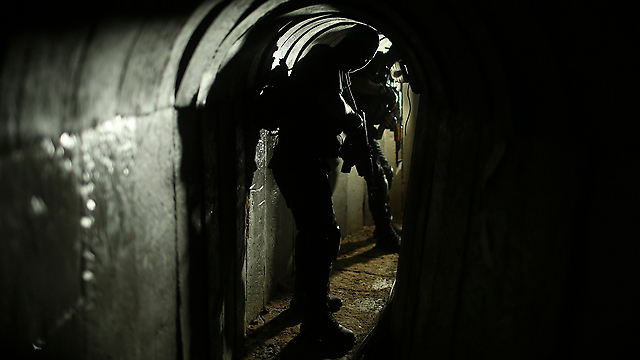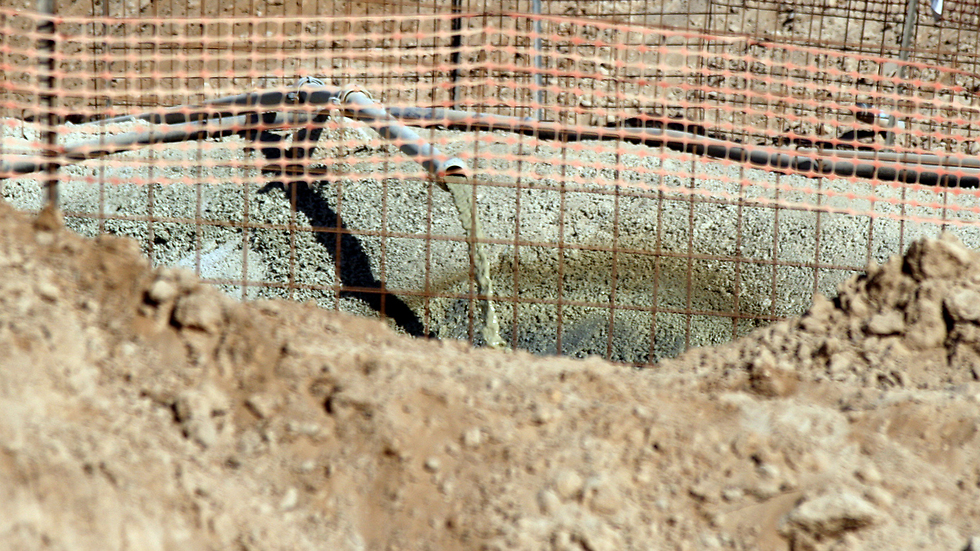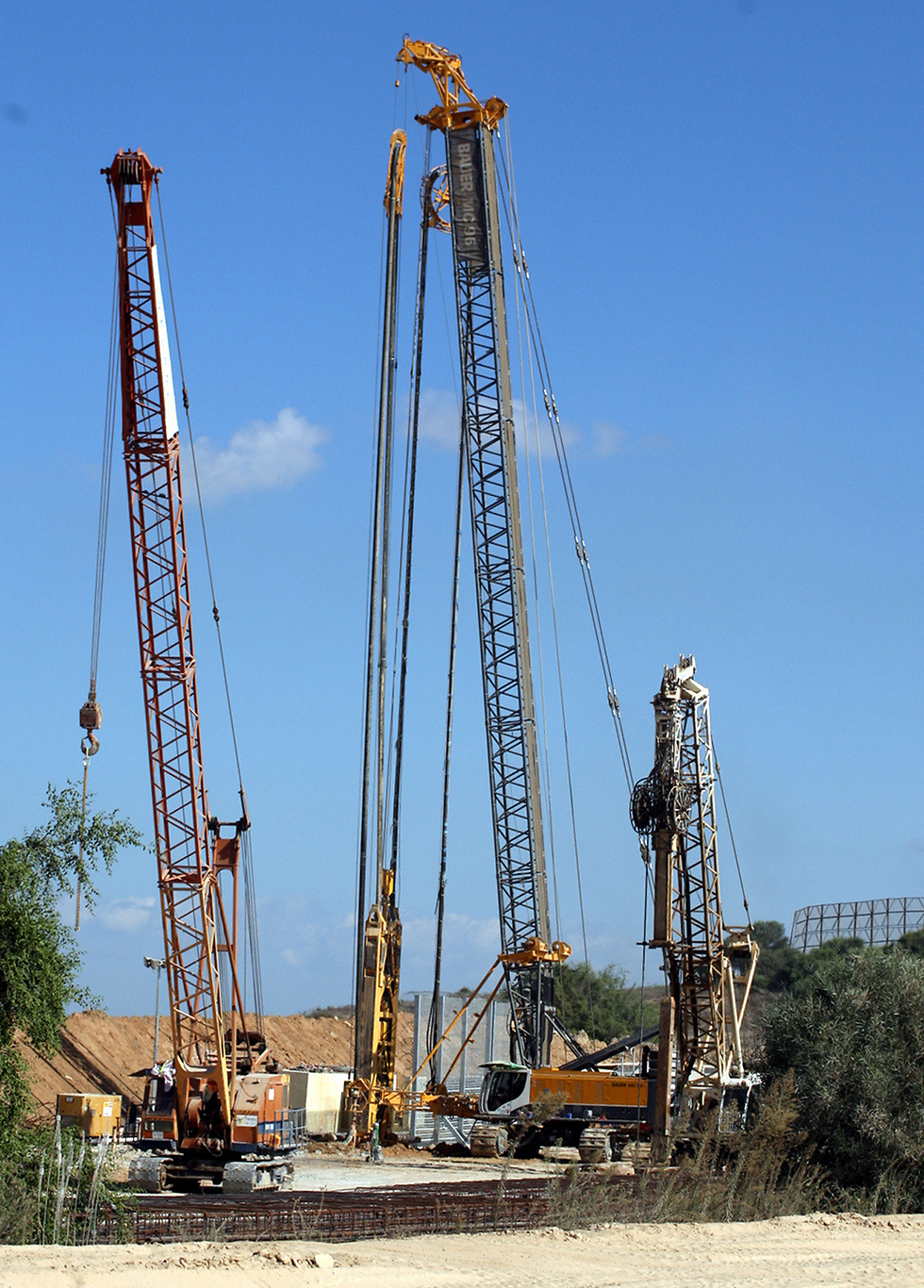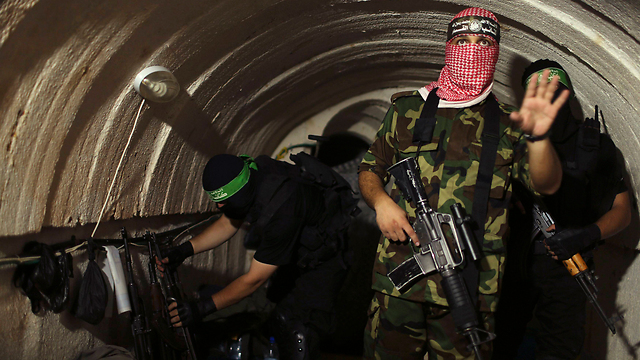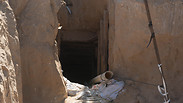
What is Israel doing about the Gaza tunnels today?
Analysis: In the wake of the comptroller report, which pointed to significant shortcomings and failures in the defense establishment's handling of Hamas's terror tunnels, Alex Fishman examines what the IDF has been doing since Protective Edge to combat the threat.
The senior officer had a rope tied around his waist, but after several dozens of meters of crawling, the officers waiting outside noticed the rope stopped moving, panicked, and pulled him back out.
It may or may not have something to do with this incident, but until Protective Edge the top military brass was uncomfortable sending regular soldiers into the tunnels. Robots were a different matter.
In the decade that preceded the 2014 operation, the tunnel threat was mostly the concern of engineering officers and the Southern Command's senior officers rather than the IDF's top brass and the Defense Ministry. In fact, it was only after Operation Protective Edge that the fighting inside, above and at the entrance to tunnels has taken center stage.
A part of that process is the construction of the new obstacle on the Gaza border, the main feature of which is an underground wall going dozens of meters deep. When construction is complete in about a year and a half, a Palestinian tunnel digger will have to break through the obstacle to cross the border.
This is just the start of the changes being made to address the shortcomings in this field, to which the state comptroller dedicated a significant part of his report on the operation.
The obstacle being built on the Gaza border was proposed by the Southern Command almost 20 years ago, when it was dealing with the smuggling tunnels on the Philadelphi Route on the Gaza-Egypt border. But the cost presented at the time was astronomical—some NIS 21 billion ($5.68 billion)—and the project was scrapped. In hindsight, it turned out these price estimations were exaggerated and were not closely examined. It turns out the same result could have been achieved for much cheaper.
Just like any other major change in the IDF, the change to the battle against the tunnels began with tactics and technology, and only then did the top brass sit to figure out what should be the operational policy.
Since Operation Protective Edge, the IDF has formulated operational plans, created new units, acquired new measures, and drilled the soldiers. But it's safe to assume that some of the comptroller's notes are still valid. Such as, for example, whether it's really necessary to go into a tunnel to destroy it, and at what stage of the fighting should the tunnels be dealt with, among others.
The process to acquire the capabilities needed to fight the tunnels is already in motion, moving ahead at full speed. The mistakes will be corrected later, in accordance with the notions that will be adopted. This is an organizational mentality that an army almost 70 years old should have kicked a long time ago: improvisation.
The leading division
The developments in the Middle East don't stop. In its annual intelligence assessment, the Military Intelligence Directorate (MID) asserted that at present, Hamas has no intention of violating the status quo and launching another round of violence. Similar statements were made by the MID chief, Maj. Gen. Herzi Halevi, when he appeared in front of the Knesset's Foreign Affairs and Defense Committee last week.
But those once bitten in 2014 are twice shy in 2017. It's safe to assume the high level of alertness in the IDF at the moment is due to the possibility of Hamas's special Nukhba force infiltrating into Israel through offensive tunnels.
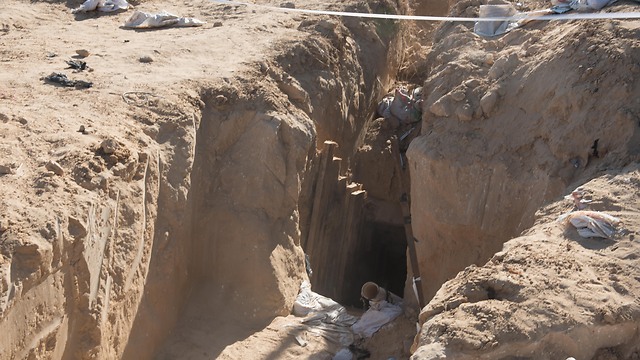
In the last third of 2016, IDF Chief of Staff Gadi Eisenkot presented a series of "strategic designs" that would dictate the direction that army should take to increase its strength. The tunnel threat should be at the top of this list.
During a closed-session conference of major generals in reserves last week, the IDF chief stressed to the attendees that the military will no longer enjoy warnings far in advance that would allow it to narrow gaps, complete training, and so on. The change to the nature of the threat has all but erased the term "long warning time."
That is why the IDF chief instructed the different commands to be prepared for a conflict breaking on any of the fronts, particularly on the Gaza front, which is the most volatile.
This means the forces should be at the ready and could be moved within short periods of time, in levels the army has not known before.
Eisenkot has also demanded reports every two or three weeks about the progress of the obstacle project and the preparedness of the forces on the Gaza front. In January, the Southern Command was the first to conduct a final drill to test preparedness for a surprise attack by Hamas, with an emphasis put on Nukhba fighters infiltrating Israel through the tunnels.
To bolster the IDF's offensive capabilities in Gaza, the military introduced some structural changes. In January 2016, the 162nd Division was moved from the Central Command to the Southern Command and put in charge of the attack plan that would see Israel taking over large areas of the Gaza Strip. Unlike before, the defense plan can now also include a chapter on the tunnels, as the IDF now has real capabilities on the ground and in the air— which have been acquired since Protective Edge—to destroy tunnels.
The state comptroller report criticized the Israel Air Force (IAF) for not being prepared to attack the tunnels in Gaza. Furthermore, it turned out the Air Force was training, acquiring capability and procuring weaponry to fight a subterranean threat completely different to the one in the Gaza Strip. This led to a situation in which the IAF entered Operation Protective Edge as a major player without having the abilities to provide the results that could lead to a real achievement.
During the operation, the Air Force had to set up its own dedicated intelligence gathering system, but was only partially successful at this venture. So by the end of the operation, the Air Force didn't know how to deal with this threat any better than the ground forces. It's safe to assume, however, that the next report will not include a similar paragraph about the Air Force's lack of preparedness.
On February 27, 2017, Hamas failed to stop the firing of a rocket at Israel, providing the Air Force with an excellent reason to return to Gaza and hit two infrastructure targets vital for Hamas. What should have surprised the terror group is not just the fact Israel knows about these projects that it had invested hundreds of millions of shekels and years of work in, but that the dozens of very heavy bombs being dropped on them from the air have so far caused no fatalities.
The Yahalom unit
The Air Force is also working on techniques to combat drones. Hamas plans to use some of its drones as accurate bombs to be dropped on strategic targets or communities in Israel. A drone, like the simpler multicopters Hamas has been using, is a measure that larger and faster aircraft would have trouble dealing with.
On February 23, a Hamas drone was shot down over the Mediterranean Sea. The Air Force is trying to develop a system to hit drones, either using surface-to-air missiles or aircraft. It's safe to assume the IDF will find the appropriate answer to Hamas's drones as well.
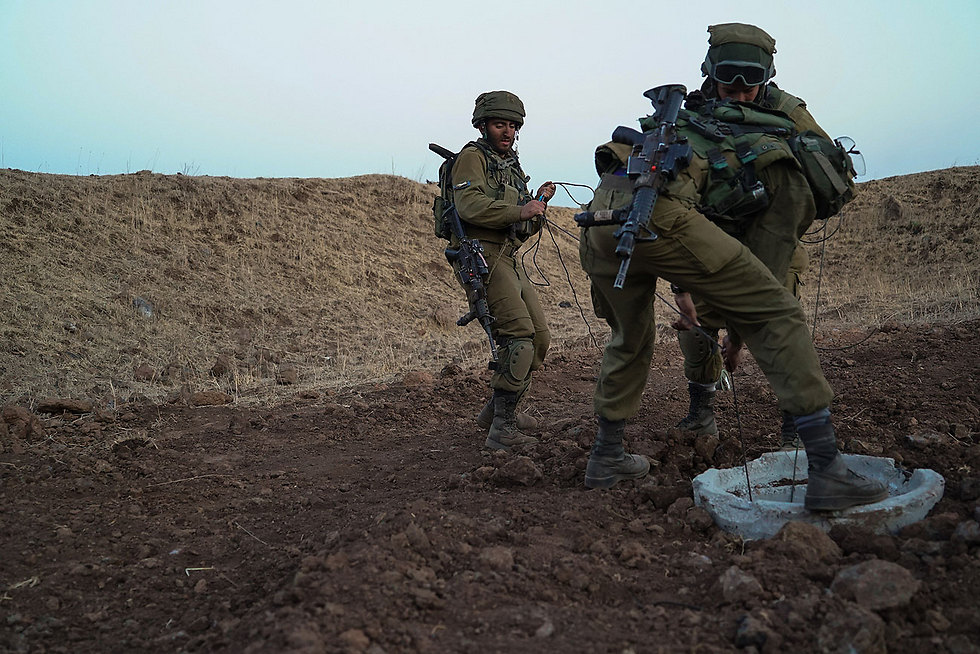
In November 2004, the Gaza Division's tunnels team commander, Capt. Moshe Taranto, was killed when a tunnel collapsed on top of him. Several months earlier, his predecessor, Capt. Aviv Hakani, was killed when an APC (armed personnel carrier) blew up during operations along the Philadelphi Route. The trauma runs deep to this very day, but over the 12 years that have passed since, the IDF's anti-tunnel apparatus grew significantly and great resources were invested in it.
In the ground forces, the engineering support unit Yahalom was entrusted with coordinating the effort against the tunnels: developing fighting techniques, developing and using different measures, and training the dedicated manpower. This support force includes two sub-units, the combat engineering reconnaissance unit and the Samur ("weasel") unit—whose expertise is underground warfare and whose number increased exponentially since Operation Protective Edge.

This means that there will be a lot more engineering troops who specialize in underground warfare among the infantry and armored forces entering the Gaza Strip than there were during Protective Edge. The skilled engineering troops would no longer have to run from one tunnel entry to the next—as they did during Protective Edge—while the other forces won't have to stop and wait for them.
One of the topics Yahalom has specialized in is robotics. The unit is both developing and procuring measures to destroy tunnels faster. This field is unusual even among the world's armies, as the troops specialize both in locating the tunnels and in destroying them using heavy engineering machinery. To this end, the IDF procured heavy equipment and hundreds of mechanical tools like drills, diggers and others. The engineering units are also in charge of the training grounds that were built after Protective Edge, where the infantry units drill fighting in battlefields filled with tunnels. Familiarizing themselves with the tunnels should make it easier on the troops when they first encounter them inside the Gaza Strip.
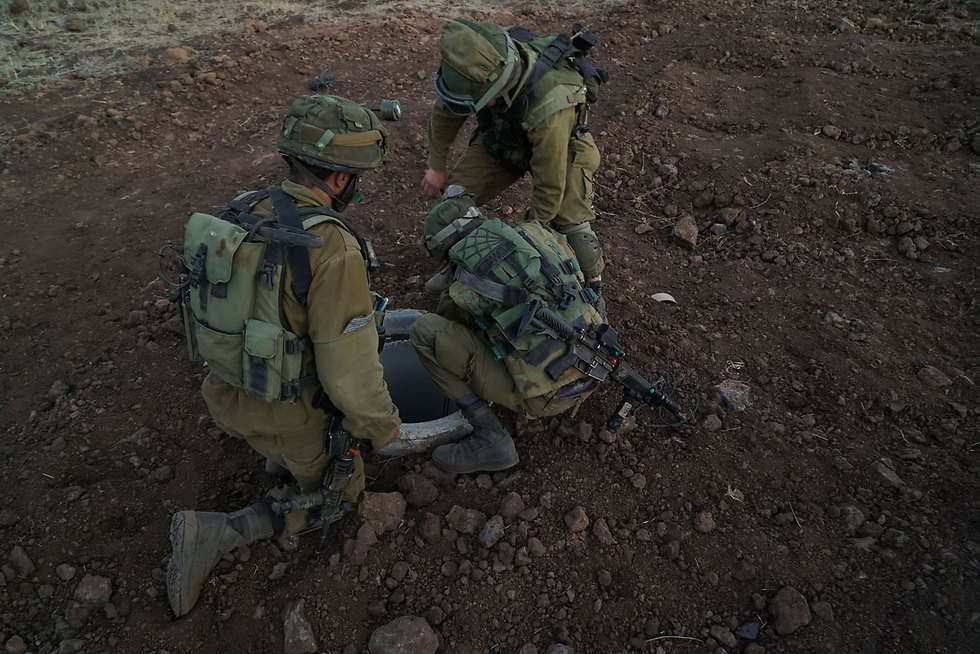
The Chief Engineering Officer, Brig. Gen. Oshri Lugasi, is a member of the IDF chief of staff's monitoring team and is required to update Eisenkot every few weeks on progress made in developing these measures, in training and in the knowledge the corps acquired in the field.
Analysis done at the General Staff and at the Southern Command after Protective Edge led to the conclusion that the rounds of fighting against Hamas may have created deterrence, but only for a limited time.
Protective Edge was longer than planned, included excessive use of firepower, and what appeared to the public as an offensive ground maneuver in the Gaza Strip was actually a defensive move.
Furthermore, the manner of operations the IDF chose may have caused losses among Hamas's military branch, but the organization's military structures did not crumble, kept fighting, and their recovery time after the war was relatively fast.
A considerable part of Hamas's middle- and junior-level command disappeared underground during the fighting, into what the comptroller calls "defensive tunnels." These tunnels are part of a tangled network about 100 kilometers long, which according to the comptroller was not investigated by Israel's intelligence agencies at all.
The IDF will not be able to ignore these tunnels in the next round of fighting, as they are being used by Hamas units that disappear underground and then reappear suddenly in front of the maneuvering IDF forces. The new military plan being formulated by the Southern Command is supposed to provide an answer to that threat, and allow the troops to reach those units at their hiding places.
It's safe to assume that some of the defensive tunnels are physically connected to the offensive tunnels. This, in turn, means Israeli intelligence agencies will have to invest a greater effort in investigating this network of tunnels because of the threat of Nukhba fighters popping up inside an Israeli community and near an IDF force.
This means it's not only the operational plan that ought to be different; the extent of investment in intelligence should also be quite different than what it was on the eve of Protective Edge. And even then great resources were invested in intelligence.
And, indeed, since Protective Edge there have been organizational changes in the IDF, with dedicated teams focusing solely on the underground threat. Hundreds of investigators in the MID and Southern Command are now studying the tunnels.
The entry shafts into tunnels that were found inside Israel were exposed almost by chance. The Goddess of Luck just happened to pass by. The technological efforts and routine military patrols in the area only marginally contributed to finding these tunnels.
In May 2014, two months before the operation, then-GOC Southern Command Maj. Gen. Sami Turgeman conducted a division-wide exercise to examine, among other things, the command and control capabilities in the fight against the tunnels. His conclusion was that he didn't know where the tunnels were or how to get inside.
Only several weeks before Protective Edge, a breakthrough was finally made that allowed to locate tunnels. This breakthrough spurred the ground maneuver and led to the discovery of 32 tunnels inside the strip. The knowledge and technology Israel obtained, right at the cusp of war, are the basis on which the knowledge serving the troops today is being established.
Today, two and a half years after Protective Edge, this equation between the Goddess of Luck and the capabilities to locate and deal with the tunnels is finally starting to change.
The State of Israel is currently investing almost NIS 3 billion in the battle against the tunnels, which also includes the building of the obstacle around the Gaza Strip. Now, there is a plan, and the effort is visible. The question that remains is what will happen when the IDF is put to the test next.










